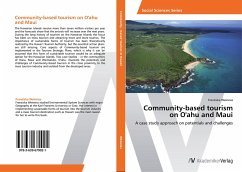The Hawaiian Islands receive more than seven million visitors per year and the forecasts show that the arrivals will increase over the next years. During the long history of tourism on the Hawaiian Islands the focus has been on mass tourism and attracting more and more tourists. The importance of sustainable forms of tourism has been theoretically realized by the Hawai i Tourism Authority, but the essential action plans are still missing. Core aspects of Community-based tourism are implemented in the Tourism Strategic Plans, which is why it can be assumed that this form of sustainable tourism would be an adequate option for the Hawaiian Islands. Two case studies in the communities of Hana, Maui and Waimanalo, O ahu- illustrate the potentials and challenges of Community-based tourism in the close proximity to the mass tourism industry and isolated from the developed areas.







